
Logan and Albert Conservation Association

Our petition SIGN IT HERE
TO: THE HONOURABLE GREG HUNT, MP, FEDERAL MINISTER FOR THE ENVIRONMENT

PROTECT KOALAS AND QUOLLS
Ask Federal MP Greg Hunt to
SAY NO TO INDUSTRY AT NORTH MACLEAN
Dear Minister Hunt,
Please reject the development application for the proposed North Maclean Enterprise Precinct at North Maclean, South-East Queensland which involves clearing 289 acres of koala and quoll habitat.
Why is this important?
There are significant environmental and community concerns
ENVIRONMENTAL CONCERNS Sign to support our petition here
Since 1996, the environmental concerns raised by the community at North Maclean and Munruben have never been addressed. There have been numerous sightings of vulnerable Koalas on and around the property. There have been numerous sightings of endangered Spotted-Tailed Quolls in adjacent properties - these quoll sightings have been the first in the Greater Brisbane Area since the 1930s . Quoll roadkill has been collected from the area confirming the presence of quolls in this area. The proposed site provides valuable habitat for koalas, quolls and other threatened species including the endangered grey headed flying fox, the Swift Parrot and the vunerable Glossy Black Cockatoo.
There have been no detailed impact assessments of industry on these vulnerable/threatened species. No frog or reptile studies have ever been carried out.
By signing the petition, you are asking Minister Greg Hunt to REJECT the North Maclean Enterprise (Industry) Precinct proposal. You will be giving our unique Koalas, Spotted-tailed Quolls and other Endangered/Vulnerable wildlife of North Maclean and Munruben a chance of survival. If this development application is approved at North Maclean, 117 hectares (approx. 289 acres) of koala food and shelter habitat will be totally cleared. The major threat to koalas is the loss of habitat. This vast proposed site is only 45% of what is eventually planned for the koala habitat of North Maclean. This current application is a dangerous precedent in the area that should not be approved.
COMMUNITY CONCERNS Sign to support our petition here
 COMMUNITY CONCERNS - tick your concerns on the attached Word document and return to address provided.
COMMUNITY CONCERNS - tick your concerns on the attached Word document and return to address provided.
Email or letterbox or post.
![]() NORTH-MACLEAN_COMMUNITY-SURVEY-March2015.doc25/03/2015, 10:59
NORTH-MACLEAN_COMMUNITY-SURVEY-March2015.doc25/03/2015, 10:59
The following list is included BUT PLEASE ADD ANY OTHERS THAT CONCERNS YOU
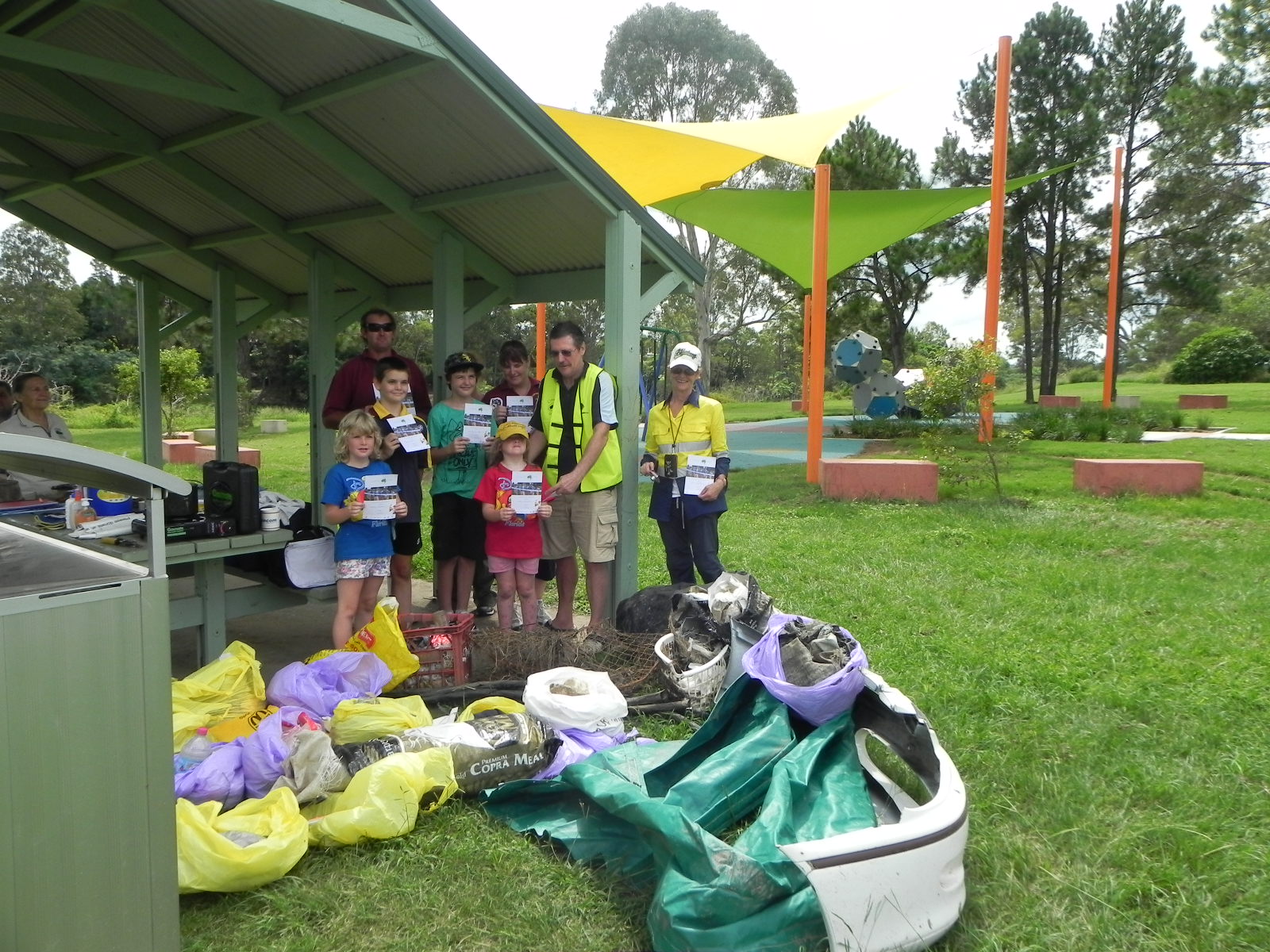
Boat owners Greg Lord, Gary Hastings and Denis Higgins assisted us with the Clean-up on the river while the land team scouted the Larey Storey Park area for litter.
Regular river boaties and those who enjoyed their first time on the river are keener than ever to have wider community appreciation and enjoyment from Logan's greatest natural water asset.
The Logan River/Larry Storey Park Clean-up has been rescheduled to
8am - 11.30am on
Sunday 24 March 2013
and YOU ARE INVITED TO JOIN US for the cleanup.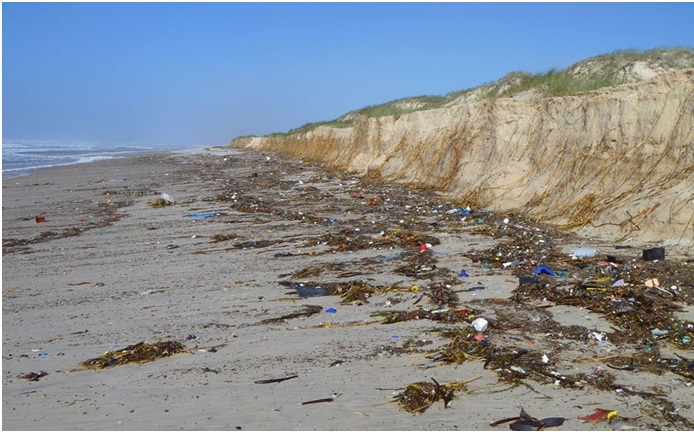 Long range forecasts indicate the weather should be kinder for boats, canoes, kayaks and people, so hopefully we will enjoy a productive morning in the park and on the Logan River.
Long range forecasts indicate the weather should be kinder for boats, canoes, kayaks and people, so hopefully we will enjoy a productive morning in the park and on the Logan River.
Please advise if you will be joining us, so we can ensure we have enough gloves, collection bags plus mugs for tea/coffee etc.
You will also need sunscreen & hat, sturdy footwear & leg protection (eg long pants in the park) plus water and snacks to keep you going.
Registration for this Clean-up site can still be made HERE
Co-ordinator for this event is Paul Casbolt m: 0428 325 275.
LACA and Greater Logan Canoe Club are collaborating on this great cleanup day and we are sponsored by Healthy Waterways.
The Healthy Waterways Clean Up crews remove over 250,000 items of litter from our waterways each year. The crews consist of two people in one of two tinnies (small metal boats). They collect floating litter and, in accessible areas, pick up litter from riverbanks and from within mangroves.
This is an incredible amount of litter - mostly plastic bottles bags and bits - that we as rate payers pay to have someone pick up our rubbish.
Why do we litter our home? How can we change and put those $$$$$$$ to better use?
If we trash it costs us cash!
Lets make Logan the cleanest River in Australia! No rubbish dumped.
Preventing sediment is another story.
See you all Sunday on or near the river.
Logan River is one of our greatest natural resources. Lets make it a great spot to visit!
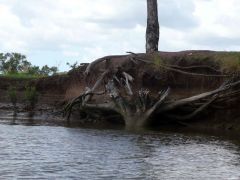
Following the release on Wednesday November 20 of the Healthy Waterways Ecosystem Health Report, in which the Albert and Logan Rivers each received fails for the second year in a row, general agreement has emerged within LACA and among other conservation groups across the region that the situation for this river/bay system is now critical and requires urgent new attention, NOT business as usual.
Continuation alone of the strategies put in place by SEQ Catchments and Healthy Waterways and responsible NRMs clearly will not provide the genuine on the ground, full system solutions that are now desperately needed. Their strategies, while clearly aimed at long term outcomes, have nevertheless been in place for ten years during which the rivers and bay areas in SE Qld have steadily declined, with the Logan/Albert/Southern Bay the worst performing system in
The need for a ‘Crisis
LACA members and others have expressed the view that urgent action is needed at a government/legislative level. To explore this and hopefully arrive at a collective decision, a ‘crisis summit’ on the rivers and bay has been proposed, to be held possibly in February 2011. As a ‘summit’ this will differ from the Logan City Council proposal for a ‘forum’. While a ‘forum’ usually involves open community access and input of ideas ending in a summary report, a ‘summit’ involves the key players and decision makers in a process of dialogue and collective decision making for action. However, the summit could take on board the information that might flow out of an earlier ‘forum’, so the two proposals are not necessarily mutually exclusive.
This issue encompasses the whole catchment area of the Logan and Albert Rivers, and as such includes the impacts on the system of major new development proposals including those at Flagstone, Yarrabilba, Bahrs Scrub and Bromelton. Accordingly, a ‘crisis summit’ would involve key decision makers from Federal, State and local government, landholders groups, Agforce, conservation groups, developers in the region, river based industry groups such as prawn farmers, tourism and amateur and professional fishing organisations. The starting point for the crisis summit should be the collective understanding that there is a ‘crisis’ in this system and that genuine new actions, possibly involving legislation, are needed in order to prevent the ecological and physical collapse of the river/bay system.
Local newspaper Jimboomba Times is now available online and have reported on this environmental isue here.
Senior member of the Healthy Waterways scientific expert panel Professor Rod Connolly presented the results to the southern region audience at the Gold Coast.
"With Logan we saw a slight improvement which came from a slight reduction in the levels of sediment and nutrients in the river," he said.
"The message for Logan is that what council and landowners are doing is excellent but we need to be working harder on two things.
"The first is the need for better processes in the development of greenfield sites, if we want healthy waterways we need to prevent sediment from escaping into our rivers.
"The second thing refers to rural areas where we are seeing a change from pastoral activity to all sorts of other land uses and again we need to ensure the sediment created by this change does not make it into the river.
"Planting bankside vegetation is one way of doing this but it is important for both council and landowners to take responsibility.
"Council's recent investment in sewerage treatment plant upgrades has been one of the most significant factors in improving the health of its waterways and hopefully it will result in further improvements."
Professor Connolly said he had considered the Albert Catchment to be in reasonably good condition but that the drop from an A- to a B- was a surprise.
"This is a meaningful decrease but at this point I couldn't jump in and say what the causes are," he said.
"We need to do more detective work to find out what has gone wrong before we can go down that route.
"Overall I would like to see more investment in waterways and we need to look at the new bulk water authorities to contribute a large fraction of the pie.
"More support for landowners and catchment groups would also be welcome."
Asked what impact new urban cities at Yarrabilba and Flagstone might have, Professor Connolly said as long as Water Sensitive Urban Design (WSUD) principals were followed, there was no need for a negative impact on waterways.
"The history of south-east-Queensland shows that when you have substantial number of people moving to new developments there is a decrease in the health of the streams and estuaries," he said.
"There are things that can be one to prevent this however and it just depends on how much the community wants to dedicate to the health of our waterways."
Senior member of the Healthy Waterways scientific expert panel Professor Rod Connolly presented the results to the southern region audience at the Gold Coast.
“With Logan we saw a slight improvement which came from a slight reduction in the levels of sediment and nutrients in the river,” he said.
“The message for Logan is that what council and landowners are doing is excellent but we need to be working harder on two things.
“The first is the need for better processes in the development of greenfield sites, if we want healthy waterways we need to prevent sediment from escaping into our rivers.
“The second thing refers to rural areas where we are seeing a change from pastoral activity to all sorts of other land uses and again we need to ensure the sediment created by this change does not make it into the river.
“Planting bankside vegetation is one way of doing this but it is important for both council and landowners to take responsibility.
“Council’s recent investment in sewerage treatment plant upgrades has been one of the most significant factors in improving the health of its waterways and hopefully it will result in further improvements.”
Professor Connolly said he had considered the Albert Catchment to be in reasonably good condition but that the drop from an A- to a B- was a surprise.
“This is a meaningful decrease but at this point I couldn’t jump in and say what the causes are,” he said.
“We need to do more detective work to find out what has gone wrong before we can go down that route.
“Overall I would like to see more investment in waterways and we need to look at the new bulk water authorities to contribute a large fraction of the pie.
“More support for landowners and catchment groups would also be welcome.”
Asked what impact new urban cities at Yarrabilba and Flagstone might have, Professor Connolly said as long as Water Sensitive Urban Design (WSUD) principals were followed, there was no need for a negative impact on waterways.
“The history of south-east-Queensland shows that when you have substantial number of people moving to new developments there is a decrease in the health of the streams and estuaries,” he said.
“There are things that can be one to prevent this however and it just depends on how much the community wants to dedicate to the health of our waterways.”
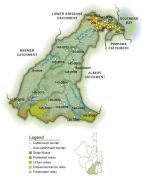 SEQ environment groups warn of the looming threat to Moreton Bay from the sheer scale of proposed urban development throughout the region. Over a decades worth of achievements could be undone if the massive new unsustainable urban development throughout SEQ is allowed to occur with out having to fully consider and put in place measures to avoid impacts to waterways.
SEQ environment groups warn of the looming threat to Moreton Bay from the sheer scale of proposed urban development throughout the region. Over a decades worth of achievements could be undone if the massive new unsustainable urban development throughout SEQ is allowed to occur with out having to fully consider and put in place measures to avoid impacts to waterways.
Large-scale catchment wide rehabilitation projects and the adoption of world's best development standards in the vicinity of one billion dollars needs to be invested to repair catchment degradation throughout the region; otherwise the ecological health of Moreton Bay is likely to continue to decline overtime.
Another F for fail for the Logan River Estuary surely should mean that all levels of government should be aware of the damage our present human activites is causing and business as usual - despite the rhetoric - will not reverse the degradation.The southern Moreton Bay Ramsar site is also in poor health.
'The 2010 report card shows the condition of the Albert and Logan estuaries remain in poor condition, despite over ten years of hard work to improve their ecological health. The poor estuary health is caused by high nutrient and sediment levels, which is continued to be caused by existing inappropriate urban and industrial development throughout the catchment. Impacts to waterways are set to escalate if a business as usual approach is taken to the massive urban development planned for our part of the region.
When will the political will change to work towards a healthy catchment and ecosystem whose value for longterm human survival is essential. Without a healthy ecosystem [planet] we will not have a healthy sustainable lifestyle.
Queensland Conservation Association released their comment in this media release. QCC_healthywaterwaysreportcard20oct.doc Bytes 01/01/1970, 10:00
QCC_healthywaterwaysreportcard20oct.doc Bytes 01/01/1970, 10:00
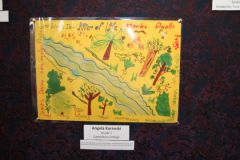 Seven year old Angela Koranski is in Mrs Olsen's year 2 class at Canterbury College. Angela recently entered the Logan City Council's World Environment Day Poster competition. Angela was selected as one of thirteen winners. Her winning entry will be displayed at the Logan Art Gallery and her poster will be reproduced as part of a Logan City Council calendar.
Seven year old Angela Koranski is in Mrs Olsen's year 2 class at Canterbury College. Angela recently entered the Logan City Council's World Environment Day Poster competition. Angela was selected as one of thirteen winners. Her winning entry will be displayed at the Logan Art Gallery and her poster will be reproduced as part of a Logan City Council calendar.
"I live on the Logan River. So do lots of birds, reptiles, mammals and plants. Cutting down trees means the animals won't have a home. Nature is special. We need to look after it!"
KOALA SIGHTINGS (Browns Plains to Veresdale Scrub, Yatala to Ipswich City)
T he koala sightings in the map shown (click to enlarge) have been reported to WILDNET (Department of Environment and Resource Management) by the community and other scientific experts, and are current to June 2009 and include historically observations as well. The koala population in the Mount Lindesay North Beaudesert area have NEVER been properly surveyed by any local council or by state government and these WILDNET sightings provide very valuable information for the local area when no other detailed studies have been undertaken.
he koala sightings in the map shown (click to enlarge) have been reported to WILDNET (Department of Environment and Resource Management) by the community and other scientific experts, and are current to June 2009 and include historically observations as well. The koala population in the Mount Lindesay North Beaudesert area have NEVER been properly surveyed by any local council or by state government and these WILDNET sightings provide very valuable information for the local area when no other detailed studies have been undertaken.
LACA encourages the community to continue to report their valuable wildlife sightings from their local area or from other areas the community may visit.
PROPOSED ENERGEX POWERLINE ROUTE - CAMP CABLE RD / WATERFORD-TAMBORINE RD /
LOGAN RIVER / LOGAN RESERVE RD and KOALAS
This WILDNET map reveals that there are numerous sightings of koalas to the north and south of Camp Cable Rd and east and west of Waterford -Tamborine Rd. RSPCA and residents have reported collecting dead and injured koalas from the vicinity of the new Camp Cable Rd and surrounding areas. There are already existing cleared easements for Powerlink easements ( north of Camp Cable Rd) and Energex easements (south of Camp Cable Rd) that create barriers for koala movement and increase the length of time that koalas may spend moving over open ground and therefore place koalas at greater risk of cars and dog attack. Local residents along Camp Cable Rd have already noted a decline in visits by native animals as a result of the construction of the new alignment for Camp Cable Rd a few years ago. Energex's own IAR report from June 2009 acknowledges that current powerline easements already fragment habitat and this proposed route will continue to fragment and degrade the habitat further with further negative impacts on local and regional significant fauna species such as koalas.